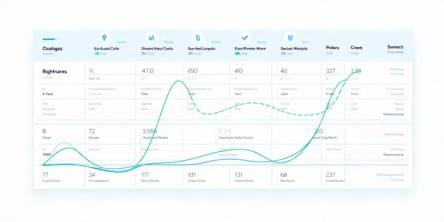Key Drivers for Successful Food Delivery App Development

On the surface, any app might look like an extension of your restaurant menu. But that is not the case. There are way more elements that play a role in bringing your food app to life. With users interacting with apps even more frequently today, adopting the digital route for your business is key. Further, the pandemic has forced people to stay indoors and rely on online services for groceries and food orders. Are you losing out on key business opportunities? Through this article, you will understand why your restaurant must go online and how you can stand out amongst the competition.
Here are 5 Ways Your App Can Outperform Competitors:
1. Mobile Apps Bring You a Step Closer to M-Commerce
The global crisis necessitates contactless payments and digital natives together are making cashless payments to a whole new level. Its ease and convenience for consumers have made it even more critical for online businesses to integrate this feature.
2. Running a Marketing Campaign
Ever thought of running a campaign that targets various consumer groups? Well, campaigns in the traditional sense can be exhausting and monitoring effectiveness is not easy. However, mobile apps can make it happen in a matter of minutes. You can run customized offers that target various age groups and preferences. Your online ordering system makes it all the easier since it produces a ton of data! It will help you understand the restaurants that had the largest number of orders placed, areas where people order from frequently & more.
3. The Lesser the Mistakes, the Lesser the Problems
Even the best of systems can crash or result in errors. However, empowering your staff with the right technology can bring you one step closer to success. Investing in a food delivery app will eliminate mistakes and help you and your staff focus on other avenues of growth.
4. Streamlining Processes like Ordering, Processing & Delivery
The delivery market is expanding faster than ever with third-party platforms. They help restaurants increase their visibility and accelerate deliveries. A food delivery app is as good as your virtual store where all details related to orders, processing, payments & deliveries can be viewed. As a restaurant owner, you gain much more visibility and insight into your business.
5. Reviews, Ratings & Online Growth
Who doesn’t want to receive good reviews and a 5-star rating? The moment you go online, you gain much more visibility and can focus on the needs of customers. Bad or good reviews help you understand what customers like and dislike about your restaurant and food. Accordingly, you can then focus on improving your service to keep the churn rate low. You can also reward loyal customers with discounts and offers from time to time.
Now that you are convinced that developing an online food ordering application can help you soar to new heights, let’s take a look at the important features you must consider.
You might already be using food delivery apps yourself. So you might understand how it works. To allow easy communication, create separate logins for each user. For instance, one for the restaurant manager, one for customers & one for a third-party delivery platform. Part of your solution should also be to create three separate apps for users. That way, the needs of every user are clearly defined and delivered.
So here are the features that top food delivery apps have:
• Detailed view of restaurants and menus
• Order placement or cancellation
• Custom search tool
• Multiple payment options
• Geolocation
• Built-in-tracker
• Push Notifications
• Reviews and Ratings
• Customer Feedback
• Reward programs
• Order & payment history
• Integration with social apps
How Much Does Food Delivery App Development Cost?
This is the most important question that restaurant businesses have. The cost of food delivery app development will depend on a variety of factors. When you sit down with a development team and discuss your exact needs, that’s when you get a clearer idea of the estimated cost. One of the first factors is the extension of functionality. A basic platform will provide the most fundamental features. While it is cheaper, it won’t provide added functions that would help you scale. Another critical factor is your platform of choice: iOS and Android.
Depending on your customer base, you can decide to develop an app on either platform. Further, you can also choose between native or cross-platform.
Another factor to consider is the UI/UX. Since most people spend time on their phones, they are already interacting with apps that have a solid user experience and are easy to navigate. This is a critical feature and can help you with business growth.
Wrapping Up
Restaurants that have adopted the digital route have increased their sales and profits that create a huge impact on their business. With convenience and ease by their side, restaurant owners agree that food apps can help them focus on other areas of growth.
Similar Articles
Building lending software isn’t just a technical project—it’s a business decision. Whether you're a fintech founder or part of a traditional lending institution trying to go digital, three questions will shape everything that follows
Learn why robust security is crucial for super app development. Explore key strategies and best practices for mobile app development security.
Walkie-talkies with an extensive reception capacity have changed significantly when it comes to portable communication by displaying cutting-edge features with seamless connectivity that covers more than just the state
USB-C technology has revolutionized the way we charge our devices, offering faster charging speeds, higher power delivery, and universal compatibility across multiple devices
Discover expert mobile app development strategies to create a viral app that attracts users and boosts engagement
Optimize app localization for iOS users across the EU with language, cultural, and regulatory adaptations. Engage users and boost retention with these tips!
Discover the top 10 mobile app development trends of 2024! Explore 5G, AI, AR/VR, blockchain, and more to stay ahead in the ever-evolving app development landscape.
With its triple-lens design and fantastic photo and video quality, the iPhone 11 Pro Max is extensively acknowledged for its superior camera system. But problems can occur with also one of the most advanced technologies. If you're having issues with the iPhone 11 pro max camera lens, knowing the typical problems and how to repair them
Protect your app from threats with AppSealing's robust, all-inclusive security solution. Safeguard user data, ensure compliance, and maintain top performance.









